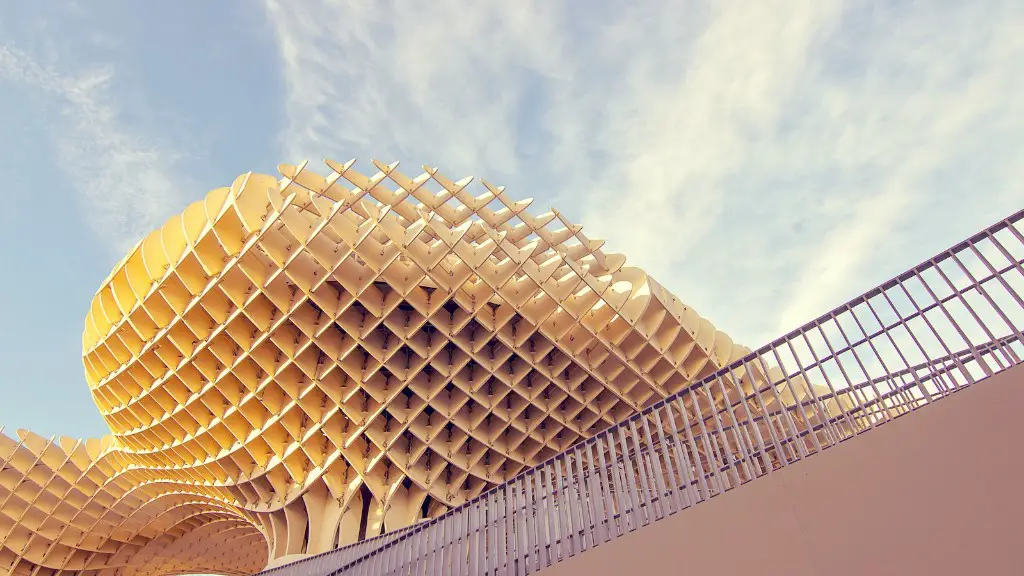Working drawings are a type of architectural drawing that shows the detailed specifications for the construction of a building.
Working drawings are typically used in architecture to communicate detailed information about a project to clients, contractors, and other interested parties. These drawings can include plans, elevations, sections, and other views, as well as information about dimensions, materials, finishes, and other important details.
What is the purpose of working drawings?
Working drawings are a crucial part of the construction process, as they convert design data into construction information and communicate that information clearly to all relevant parties. Without accurate and up-to-date working drawings, it would be impossible to build structures to the correct specifications.
Working drawings are complete sets of plans and specifications that show and describe all phases of a project. This includes architectural, structural, mechanical, electrical, civil engineering, and landscaping systems. Working drawings are necessary for accurate bidding by contractors and for the use of artisans.
What is the difference between working drawings and construction drawings
Construction drawings are the architectural construction documents (CD set) that are also known as working drawings. They are prepared to envision the architectural elements in the building or the building before construction starts.
A set of working drawings is a collection of drawings for each individual part that must be manufactured, as well as assembly drawings that show how the parts fit together. This allows the manufacturer to see all the dimensions and requirements for each part, as well as how the final product should look.
What are three types of working drawings?
A working drawing is a type of drawing that is used to record the construction or assembly of a product or structure. Working drawings are usually created by engineers or architects and are used to communicate the design of a product or structure to the people who will be responsible for its construction or assembly. There are many different types of working drawings, including structural drawings, architectural drawings, civil drawings, electrical drawings, and mechanical drawings.
Working drawings are an important source of information for understanding how a specific building performs. They document the relationship between the building’s design, technology, and working systems, and provide insight into how those systems interact. By studying working drawings, we can learn about a building’s heating and cooling systems, electrical design, and structural components. This knowledge can help us to make informed decisions about how to maintain or improve the building.
What is the difference between working drawings and specifications?
Construction drawings provide the graphical representation of the construction project, detailing the arrangement of materials, standards, techniques, and so on required to carry out the works. Specifications will provide a more detailed up-front description of the materials, standards, and techniques required to complete the construction project.
Detail drawings are essential to the construction process as they provide specific information about assembly and the junctions between components. They also help to ensure compliance with regulations and other requirements. Detail drawings can be used to show construction details, detailed form, and much more.
What are the two main parts of a working drawing
Working drawings are important in the design process as they provide detailed information on how a component is to be manufactured, assembled and inspected. Detail drawings usually consist of multiple 2D views of a single component with complete dimensions, tolerances and notes for construction, manufacturing and inspection. Assembly drawings on the other hand, show how the various components are to be put together to form the final product.
A construction drawing, also known as a working drawing, is a detailed drawing of a structure that shows the dimensions, materials, and installation procedures. A detail drawing is a drawing that shows a single component or element of a larger structure.
What are the 6 types of construction drawings?
Construction drawings are drawings that are used by contractors and architects to build structures according to a set of specifications. There are six main types of construction drawings: plans, interior and exterior elevations, building and wall sections, interior and exterior details, schedules, and room finishes.
Plans are the most important type of construction drawing, as they show the overall layout of the structure. Interior and exterior elevations show the heights of the walls and the placement of the windows and doors. Building and wall sections provide a more detailed view of the construction, showing how the walls are built and the placement of reinforcing materials. Interior and exterior details show the finishes that will be used on the inside and outside of the structure. Schedules detail the materials that will be used and the sequence of construction. Room finishes show the types of flooring, wall coverings, and ceilings that will be used.
Construction drawings provide a critical reference for contractors and architects during the construction process. They ensure that the structure is built according to the specifications and that all the required materials are used.
A working drawing is a technical drawing that is used during the manufacturing phase of a product. In architecture, these include civil drawings, architectural drawings, structural drawings, mechanical systems drawings, electrical drawings, and plumbing drawings.
What are the 5 major architectural drawings
An architectural drawing is a type of drawing that shows the layout of a building or other structure. Structural drawings show the framework of the structure, while engineering drawings show the details of the engineering design. Shop drawings show the details of the construction, while technical drawings show the details of the equipment or systems. HVAC drawings show the layout of the heating, ventilation, and air conditioning systems, while electrical and plumbing drawings show the layout of the electrical and plumbing systems.
Construction drawings are important for any construction project, as they provide detailed information on the specific components and systems that will be used in the project. There are different types of construction drawings, depending on the type of project, and each type of drawing will contain different information.
What are the 4 types of drawing?
There are many different types of drawing, each with its own distinct characteristics. Caricature drawing, for example, is an exaggerated or distorted portrayal of a subject, often for comedic effect. Cartoon drawing is a similar style, but typically features simpler, less detailed images. Figure drawing is a more realistic approach that depicts the human form in all its detail and complexity. Gesture drawing is a quick, spontaneous style of drawing that captures the movement and energy of the subject. Line drawing is a more minimal approach that focuses on the shapes and contours of the subject. Perspective drawing is a technique that uses optical illusions to create a sense of depth and space. Photorealism is a highly realistic style of painting or drawing that uses photographs as a starting point. Pointillism is a technique in which small dots of color are used to create a larger image.
Working drawings are used to communicate the vision for a project to the people who will make it happen. They can include drawings such as structural, architectural, and mechanical drawings. The project name, notes for the contractor, and scale are typically included on working drawings. The ground line and floor lines help indicate the placement of objects in the space. The structural elements legend provides information about the materials and finishes that will be used. Door and window tags show the locations of openings in the space. North and relative positioning help orient everyone to the space.
What are the three basic types of architectural drawings
An architectural drawing is a type of drawing that is used to depict a structure or a space. There are six types of architectural drawings: floor plan, site plan, elevation, cross-section, and isometric and axonometric projections.
Working drawings are usually more detailed than the project manual, and they often contain information about the design, location, dimensions, and construction of the project. The project manual is a written supplement to the drawings and often includes information about materials and workmanship, as well as information about the bidding process.
Conclusion
Working drawings are construction documents that include detailed instructions for how to build a structure. They are used by contractors and tradespeople to erect a building.
Working drawings are a critical part of the architect’s toolkit. They are used to communicate the design intent of a project to the team of engineers and builders who will ultimately make it a reality. Without these drawings, it would be nearly impossible to turn a concept into a physical structure.





